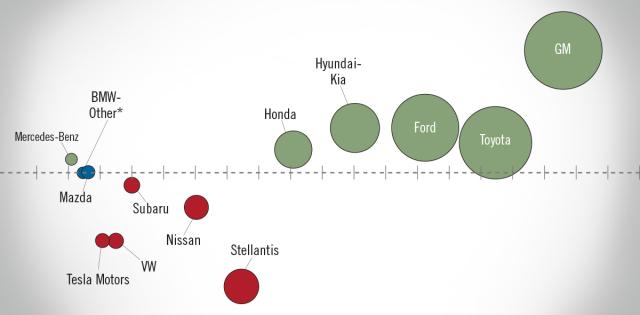Many consumers who purchase new cars or trucks from local dealerships may not realize that the dealership actually owns those cars and trucks, which they purchase directly from the factories. So how are dealerships able to afford keeping an inventory of all of those new cars and trucks on their lots?
Local dealerships purchase their inventories through financing called “floor plan lending.” Here’s how it works:
Local dealerships have a better sense than anyone what vehicles will sell best in their markets – cars or trucks, SUV’s or compacts, sports cars, luxury cars or more affordable models. Based on that knowledge, dealers place orders with factories based on what’s in the production pipeline and factories fulfill those orders.
When the factory ships the vehicle to the dealer, they are paid in full for the car’s invoice price, usually drafted directly from a dealer’s bank account.
But few dealerships have the cash to pay for those vehicles out of pocket. So they work with lenders who provide “floor plan” lines of credit for those vehicles – financing through a lender that is secured by each vehicle and its VIN number. Floor plan lenders include local and regional banks, large national banks, and financing companies owned by the manufacturing companies, like Toyota Financial or Ford Credit. The loans are often made with a one year term, and based on an aggregate budget; for example, a dealer might be able to borrow $10 million over the year to purchase 300 new cars.
These loans are secured not only by the vehicles themselves, but also by dealership collateral (buildings and property) – and often by the dealer himself or herself. The loans are also inspected periodically by lenders, by checking the inventory of all collateralized vehicles. Floor plan loans are among the safest of all financial instruments.
But because inventories are so immense, the car business is very sensitive to both floor plan interest rates and the tax treatment of interest expenses. A one percent rate increase can raise some dealership costs by millions of dollars. The ability to deduct interest expenses is critical for the business model to work. And because dealerships earn razor thin margins on the sale of new cars, any costs of rising rates or new tax expenses will get passed along to consumers – resulting in higher prices and increased monthly payments.
Bottom line: America’s entire system of purchasing new cars and trucks relies upon the accessibility of affordable floor plan lending. Without it, dealers would not be able to provide safe, affordable personal transportation to millions of consumers each year.












